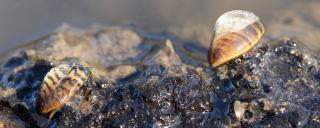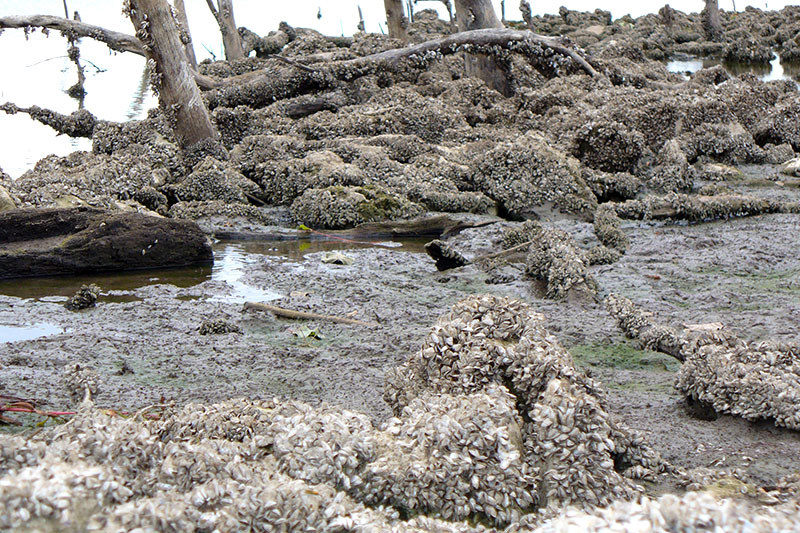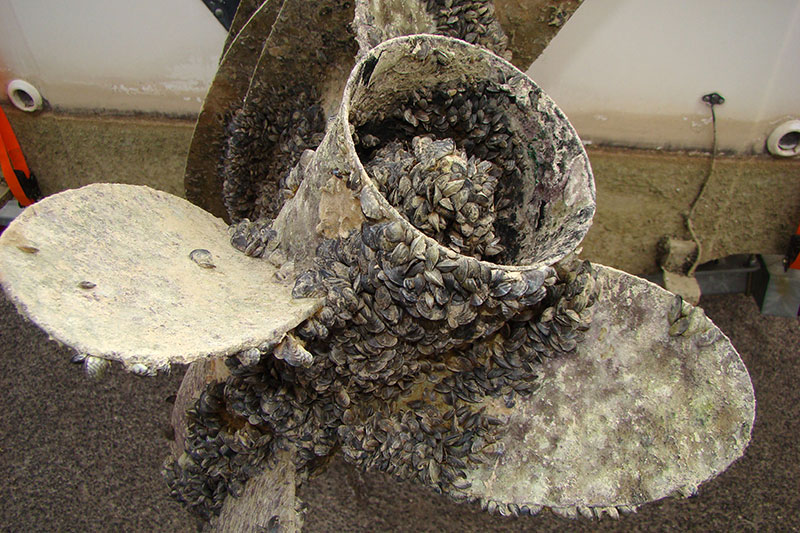| Scientific Name |
(Dreissena polymorpha) |
| Classification and Permitting Level |
1 - Prohibited Aquatic Nuisance Species |
| Species Description |
A zebra mussel is a small, D-shaped or triangular bivalve with alternating light and dark brown stripes. They can be distinguished from native mussels by the presence of byssal threads, small hair-like structures that are used to attach to hard surfaces. They can be confused with invasive quagga mussels. |
| Preferred Habitat |
They are typically found attached in shaded or on undersides of hard surfaces. |
| Reason for ANS Designation |
Filter-feeding on small plants and animals impact water quality and the ecosystem while attachment on hard surfaces impact recreational activities. Fouling equipment and water pipes in power and water industries can have significant economic costs. Once established, there is no good control method. |
| Place of Origin |
Zebra mussels are native to eastern Europe and western Asia but were introduced to the United States in the 1980s. The initial introduction was from the discharge of ballast water into the Great Lakes. Current spread is likely from the movement of water and fouled equipment. |
| Stopping the Spread |
When taking equipment out of a lake or stream, remove all plants and mud and drain all water prior to leaving. Allow the equipment to dry completely, rinse with 140°F water for 10 seconds of contact. |
| Additional Information |
|



